Captain Cook Snorkeling: Explore Hawaii’s Reefs
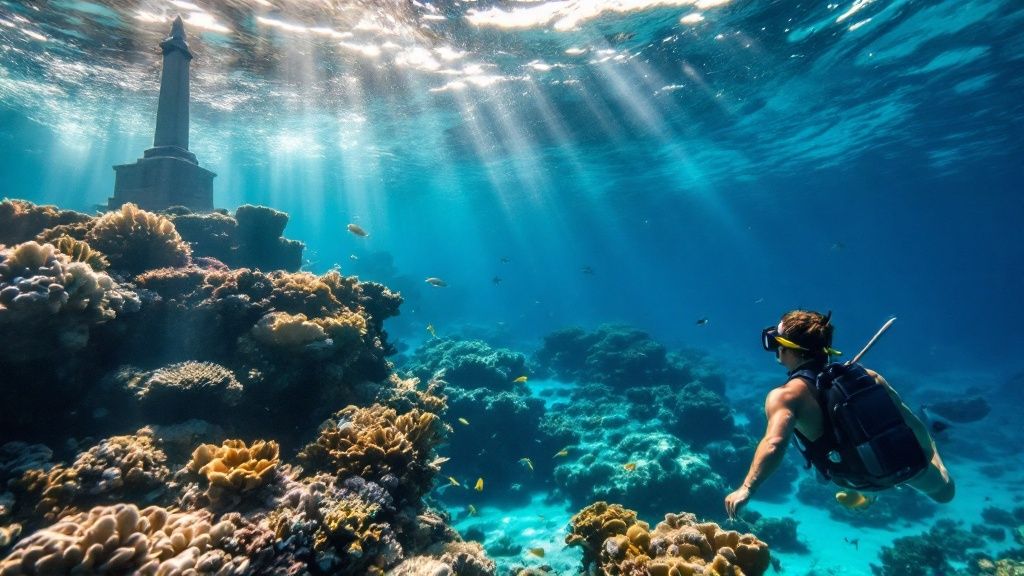
The Fascinating History Behind Captain Cook Snorkeling
Captain Cook snorkeling isn't just a fun activity; it's a captivating journey through time, linking us to a pivotal moment in Hawaiian history. Kealakekua Bay, the heart of this snorkeling adventure, boasts stunning natural beauty and deep cultural significance. This unique blend of nature and history makes exploring these waters so compelling.
The Arrival of Captain Cook and Its Impact
Captain Cook's 1779 arrival in Hawaii marked a significant turning point for the islands. His voyages introduced Western culture, irrevocably changing Hawaiian society. Kealakekua Bay became a central point of this interaction, solidifying its historical and cultural importance. This wasn't just a brief encounter; its lasting impact continues to shape the region. Cook's arrival initiated substantial changes in Hawaiian society, particularly in areas like Kealakekua Bay. The bay isn’t just known for its stunning marine life and vibrant coral reefs, which attract thousands of snorkelers annually; it's also the site of Captain Cook's death. On February 14, 1779, Cook and four marines were killed during a skirmish with native Hawaiians. Today, snorkeling near the Captain Cook Monument is a popular activity, with over 100,000 visitors estimated to snorkel around Hawaii each year, contributing to the local economy. Discover more insights about Captain Cook's historical impact.
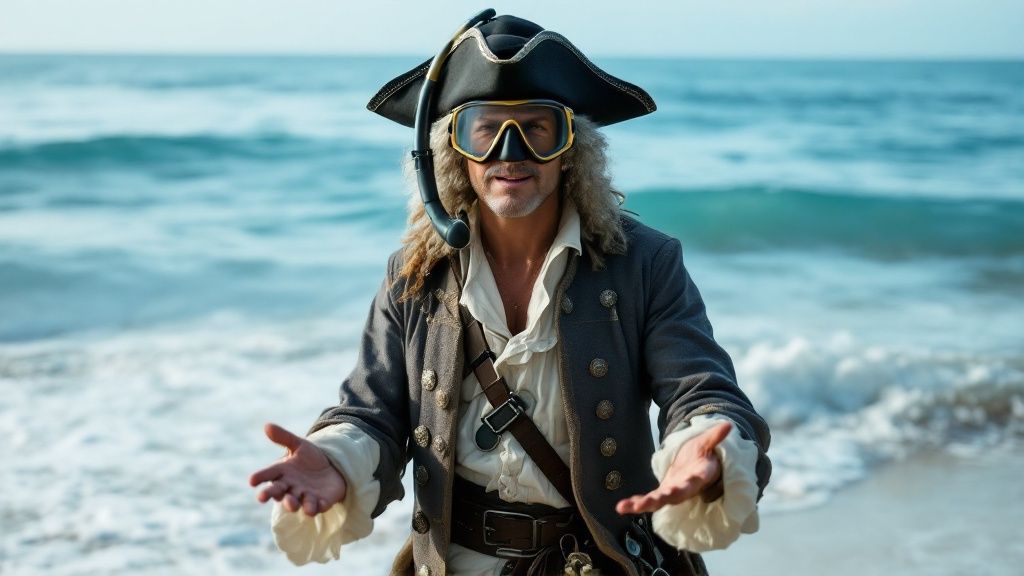
The Captain Cook Monument: A Symbol of Complex History
The Captain Cook Monument, a striking white obelisk, serves as a powerful reminder of this historical encounter. Erected in 1874, it marks the approximate location of Cook's death. More than just a memorial, the monument symbolizes the complex relationship between Hawaiian and Western cultures, adding another layer of meaning to the Captain Cook snorkeling experience and prompting reflection on the past.
Experiencing History Through Snorkeling
Snorkeling in Kealakekua Bay today offers a unique perspective on this historical narrative. Exploring the vibrant coral reefs and diverse marine life, you're swimming in the same waters that witnessed these pivotal events. This connection to the past enriches the experience, adding depth and significance beyond simple recreation. Imagine gliding through the clear water and seeing the monument below – a tangible link to a bygone era. You might also be interested in: Learning more about our sitemap.
Balancing Preservation and Accessibility
Kealakekua Bay's protected status as a Marine Life Conservation District highlights the importance of balancing preservation with accessibility. The bay's thriving ecosystem demonstrates the success of these conservation efforts, ensuring future generations can also enjoy the wonder of Captain Cook snorkeling. This mindful approach to tourism allows visitors to experience the bay's beauty while contributing to its protection, maintaining the historical and natural integrity of this remarkable location.
Underwater Wonders: Marine Life at Captain Cook
Captain Cook snorkeling is famous for its incredible array of marine life. Kealakekua Bay, a protected Marine Life Conservation District, gives snorkelers a unique look into a flourishing underwater world. The bay's special geography and protected status create the perfect environment for amazing marine encounters. But what makes this area truly stand out?
A Kaleidoscope of Colors: Exploring the Reef's Inhabitants
The reefs at Captain Cook are teeming with a wide variety of species, from brilliantly colored reef fish to elegant sea turtles. You might spot the Hawaiian state fish, the humuhumunukunukuapua'a (reef triggerfish), with its unusual beak-like mouth. Also, be on the lookout for honu, or green sea turtles, often seen grazing on algae near the surface. These special encounters with iconic Hawaiian species truly elevate the Captain Cook snorkeling experience.
To help you understand the diverse marine life you can encounter, take a look at this table:
A comprehensive overview of the diverse marine life you might encounter while snorkeling at Captain Cook monument and surrounding areas
| Species Type | Common Names | Best Time to Spot | Frequency |
|---|---|---|---|
| Fish | Reef Triggerfish (Humuhumunukunukuapua'a), Yellow Tang, Moorish Idol, Butterflyfish | Year-round | Common |
| Sea Turtle | Green Sea Turtle (Honu) | Year-round | Common |
| Invertebrates | Octopus, Moray Eel, Sea Urchin, Crown-of-Thorns Starfish | Year-round | Varies by species |
| Coral | Various hard and soft corals | Year-round | Abundant |
| Marine Mammal | Spinner Dolphin, Humpback Whale (seasonal) | Winter (Humpback Whales) | Occasional (Dolphins), Seasonal (Whales) |
This table highlights the most commonly encountered species and the best times to see them. While many species are present year-round, the frequency of sightings can vary.
The Coral Foundation: Understanding the Ecosystem
The colorful coral reefs are a crucial part of this underwater paradise. Coral provides shelter and food for many marine creatures, building a complex and interconnected ecosystem. Think of it like a busy city, with different species playing unique roles and depending on each other to survive. Grasping this delicate balance helps snorkelers appreciate the importance of reef conservation.
Kealakekua Bay: A Snorkeler's Paradise
Kealakekua Bay is known for its outstanding snorkeling, thanks to its diverse marine life and healthy coral reefs. The bay is a haven for many fish species, with up to 50 species observed on a single dive. Snorkeling tours to the Captain Cook Monument are very popular because of the bay's remarkable ecosystem. Kona Snorkel and Sail offers more information about Captain Cook snorkeling. These tours often incorporate educational information about Captain Cook’s legacy and the history of his interactions with native Hawaiians. The bay’s cultural significance is matched by its natural beauty, with dramatic sea cliffs like the Pali Kapu O Keoua enhancing the landscape. Snorkeling in Hawaii generates approximately $100 million in revenue annually, with Kealakekua Bay being a major attraction.
Seasonal Variations: Witnessing Nature's Rhythms
The marine life at Captain Cook shifts with the seasons. While some species are always present, others are more common during certain times of the year. For instance, humpback whales migrate to Hawaiian waters in the winter, an incredible experience for fortunate snorkelers. Planning your snorkeling trip around certain seasons can improve your chances of spotting particular marine life.
Respectful Observation: Protecting this Underwater Treasure
Protecting this fragile environment is vital for future generations. Snorkelers should be responsible, avoiding contact with coral and keeping a respectful distance from marine life. Easy steps like using reef-safe sunscreen contribute to the reef's health. For more information on responsible snorkeling practices, see Our site's posts.
Tips for an Enriching Snorkeling Experience:
-
Look but don't touch: Avoid any contact with coral and other marine life.
-
Maintain a safe distance: Respect animals' space and watch their natural behavior.
-
Use reef-safe sunscreen: Protect your skin and the coral reef.
-
Be mindful of your fins: Don't kick up sand or disturb the sediment.
-
Consider joining a guided tour: Learn from local experts and gain valuable insights into the bay's ecosystem.
By snorkeling responsibly, we can help preserve the underwater wonders of Captain Cook for years to come. Swimming in these pristine waters, surrounded by an abundance of marine life, is an experience to be treasured and protected.
The Monument Experience: Beyond Just Snorkeling
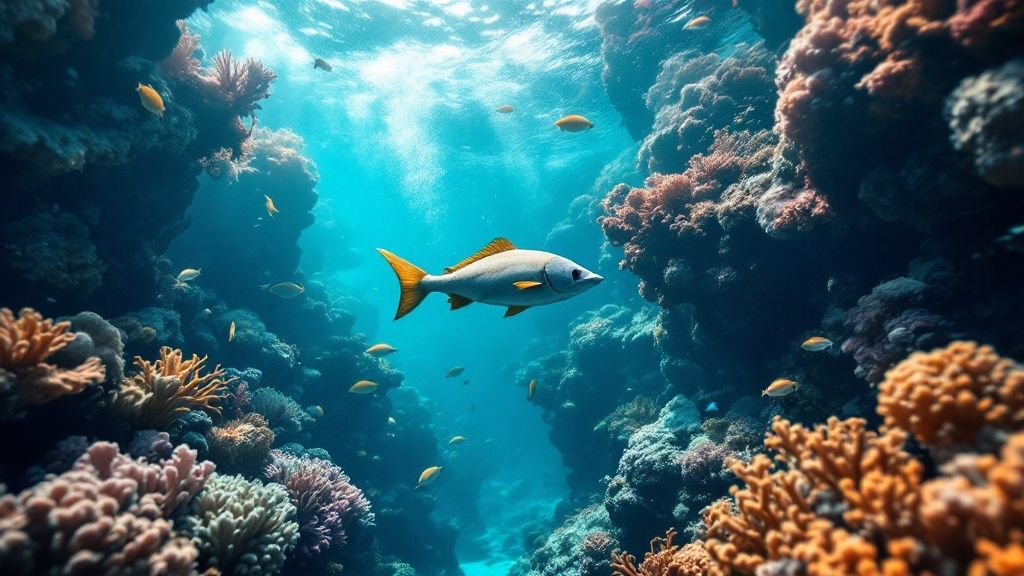
The Captain Cook Monument is more than just a landmark for snorkelers. It's a powerful reminder of the intersection of Hawaiian and Western cultures. This 27-foot obelisk, erected in 1874, elevates the Captain Cook snorkeling experience beyond simply enjoying the vibrant underwater world.
A Deeper Dive Into History
The monument adds another dimension to Kealakekua Bay's already fascinating history. It marks the spot where Captain James Cook was killed in 1779, a pivotal moment in the relationship between Hawaiians and Westerners. This event, and the monument itself, encourages us to consider the impact of exploration and the complexities of cultural exchange.
The Captain Cook Monument in Kealakekua Bay, Hawaii, stands as a testament to this complicated history between European explorers and indigenous peoples. The bay, a designated Marine Life Conservation District, protects a diverse and fragile ecosystem, home to coral reefs and a wide variety of fish. Visitors often combine a trip to the monument with Captain Cook snorkeling, experiencing the bay's underwater beauty firsthand. Remarkably, approximately 70% of Hawaii’s marine life is endemic to the islands, highlighting the importance of conservation. Explore this topic further.
Preservation in a Remote Paradise
Kealakekua Bay's remote location has been essential to preserving both the monument and the surrounding marine environment. Limited access and stringent regulations within the conservation district help safeguard this delicate ecosystem. This ensures visitors can experience the bay's splendor while minimizing their environmental footprint.
Cultural Significance and Respectful Visitation
The monument holds profound cultural significance for native Hawaiians. Visitors are encouraged to learn about local protocols and customs before arriving. Understanding the monument's historical context enriches the Captain Cook snorkeling experience. Respecting the natural environment by refraining from touching the coral or disturbing marine life is also essential. These practices demonstrate respect for the site and contribute to its ongoing preservation.
Enhancing Your Snorkeling Experience
Understanding the history and cultural nuances surrounding the Captain Cook Monument transforms your snorkeling trip from a simple recreational activity into something far more meaningful. It’s a chance to connect with the past, appreciate the natural beauty, and contemplate the interplay of cultures that shaped this special place. The monument acts as a tangible link to this history, giving Captain Cook snorkeling a deeper significance that extends beyond the stunning underwater views. This thoughtful approach adds an extra layer of richness and appreciation to your time in Kealakekua Bay.
Choosing Your Perfect Captain Cook Snorkeling Tour
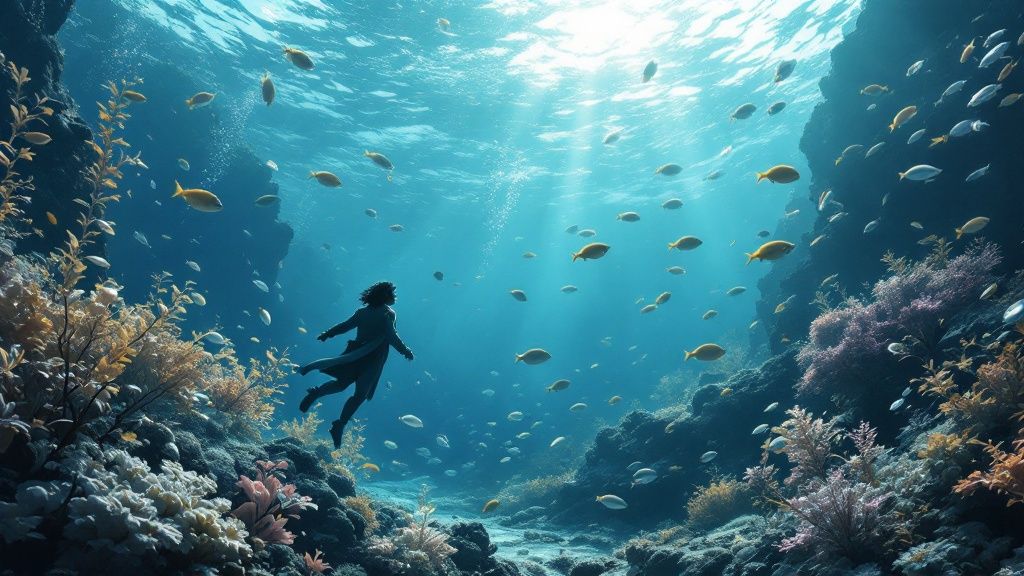
Planning a snorkeling trip to Captain Cook? With so many tours to choose from, it's easy to feel a little lost. Don't worry! By understanding what each tour offers, you can find the perfect fit for your snorkeling adventure. Let's dive in and explore what to consider when booking your Captain Cook excursion.
Tour Styles: Finding Your Ideal Vessel
Captain Cook snorkeling tours offer a variety of boat options. For a more intimate and personalized adventure, a zodiac tour is a great choice. With smaller groups, you'll have more interaction with the guides and flexibility to explore hidden coves. If you're traveling with family or prefer a more relaxed experience, a catamaran offers stability, plenty of space, and often includes onboard amenities like restrooms and refreshments.
Choosing the right vessel is the first step in creating a memorable snorkeling experience.
Timing Your Snorkeling Adventure: Morning vs. Afternoon
The time of day can significantly impact your snorkeling experience. Morning excursions usually offer calmer waters and greater visibility. This is ideal for spotting marine life and enjoying the underwater world. Plus, an early start often means beating the crowds at popular spots like the Captain Cook Monument. Afternoon tours may encounter slightly choppier waters but provide a unique perspective as the sun illuminates the underwater landscape.
Kealakekua Bay: A Blend of History and Nature
Snorkeling excursions to Kealakekua Bay, home to the Captain Cook Monument, offer a unique combination of history and natural beauty. These tours generally depart early in the morning to take advantage of calmer seas. The bay's gentle slope and excellent visibility make it a fantastic location for observing diverse marine life, from vibrant fish to fascinating eels and octopuses.
Local tour operators report that about 70% of snorkelers choose these tours for their historical and educational significance, while 30% are primarily drawn to the rich marine life. Learn more about these fascinating tours: Captain Cook Snorkel Cruises. Tourism plays a vital role in Hawaii's economy, with activities like snorkeling contributing an estimated $20 billion each year.
Features and Pricing: Getting the Most for Your Money
Captain Cook snorkeling tours vary in price and features. Premium pricing often reflects inclusions such as high-quality snorkeling equipment, experienced guides, and added amenities like meals and beverages. It's crucial to distinguish between truly valuable features and unnecessary extras. Look for operators who prioritize conservation and cultural respect, ensuring the long-term health of the reef and honoring the bay's cultural significance. For more information, explore our site: Our activity sitemap.
Equipment and Amenities: Enhancing Your Comfort
High-quality snorkeling gear, including a comfortable mask, snorkel, and fins, is essential for a positive experience. Some tours provide wetsuits or flotation devices, which can be helpful for less experienced swimmers. While extras like onboard refreshments and underwater cameras can enhance your trip, they shouldn’t be the deciding factor if you’re on a budget.
Finding Your Perfect Fit
Ultimately, the ideal Captain Cook snorkeling tour depends on your individual preferences. Consider your priorities: a small group, a historical focus, or a family-friendly atmosphere.
To help you choose, here’s a comparison of some common tour types:
Captain Cook Snorkeling Tour Comparison: A detailed comparison of the most popular snorkeling tour options at Captain Cook, helping visitors choose the right experience for their needs.
| Tour Type | Duration | Price Range | Inclusions | Best For |
|---|---|---|---|---|
| Small Group Zodiac Tour | 3 hours | $120-$180 | Snorkeling gear, guided tour, snacks, drinks | Adventurous snorkelers, small groups |
| Family-Friendly Catamaran Tour | 4 hours | $80-$120 | Snorkeling gear, lunch, onboard entertainment | Families, larger groups, relaxed pace |
| Performance Sailing and Snorkel | 3.5 Hours | $115-150 | Snorkeling gear, sailing experience, drinks | Adventurous individuals or groups |
| Deluxe Snorkel & Dolphin Watch | 4 hours | $150-$220 | High-quality snorkeling gear, guided tour, lunch, marine biologist presentation | Marine life enthusiasts |
By considering your needs and preferences and using this comparison, you can select the perfect Captain Cook snorkeling adventure and create lasting memories.
Master Techniques for Captain Cook Snorkeling Success
Want to elevate your Captain Cook snorkeling adventure from memorable to truly unforgettable? These insider tips, shared by locals who know Kealakekua Bay like the back of their hand, will enhance your experience and help protect this special place.
Mastering Water Entry and Reef Protection
Protecting the reef starts with a mindful entry. Avoid damaging the delicate coral by using designated entry points or entering from sandy areas. At the Captain Cook Monument, for instance, enter to the right of the concrete wall. You'll see a carved foothold for safe entry and exit. This also protects your feet from the sharp spines of sea urchins! This approach preserves Kealakekua Bay for everyone to enjoy.
Efficient Breathing for Extended Underwater Time
Want to maximize your underwater exploration? The key is efficient breathing. Practice taking deep, slow breaths, filling your lungs completely with each inhale and fully exhaling. This technique calms the body, conserves energy, and optimizes oxygen intake. The result? More time to enjoy the underwater world without constantly surfacing for air. Imagine yourself gliding effortlessly through the crystal-clear water, taking in the vibrant reef at your own pace.
Positioning Strategies for Optimal Marine Encounters
Kealakekua Bay's currents can be a bit unpredictable. Strategic positioning helps you minimize their impact and maximize your wildlife viewing. Stay close to the reef's edge, or use the current to your advantage, drifting along and observing the passing scenery. Like a skilled sailor harnessing the wind, understanding the current transforms your snorkeling experience.
Equipment Selection: Essentials for Kealakekua Bay
The right gear makes all the difference in comfort and enjoyment. A well-fitting mask and snorkel are crucial for clear vision and easy breathing. Fins allow you to move efficiently through the water without disturbing the delicate seabed. Consider a rash guard for sun protection and extra warmth. A thermal rash guard can significantly extend your time in the water. And don’t forget a high-quality dry bag to protect your valuables and electronics, allowing you to capture those incredible underwater moments with your GoPro worry-free.
Underwater Photography Tips: Capture the Magic Responsibly
Underwater photography is an amazing way to capture the beauty of Captain Cook, but it’s essential to do so responsibly. Maintain a safe distance from marine life to avoid disturbing them. Respecting the wildlife is paramount. Avoid using flash photography, which can startle certain species. Instead, embrace natural light and adjust your camera settings for stunning results.
Spotting Elusive Species: Training Your Eye
Kealakekua Bay is home to a wealth of marine life, but many creatures are masters of camouflage. Learn to identify common hiding spots, like under ledges and within coral crevices. Pay attention to subtle movements and color variations. Honing these observation skills, like a detective searching for clues, unlocks a new level of appreciation for the bay’s biodiversity. Over 400 species of fish call Kealakekua Bay home, many waiting to be discovered by the observant snorkeler.
Timing and Conditions: Planning for Success
Timing your excursion right can dramatically impact your snorkeling experience. Morning excursions typically offer the calmest waters and clearest visibility. However, be prepared for changing conditions. Even a calm morning can give way to changes in weather or currents. Check the weather forecast before you head out and be flexible with your plans. A backup plan ensures a smooth and enjoyable trip, no matter the circumstances.
Preserving Paradise: The Future of Captain Cook Snorkeling
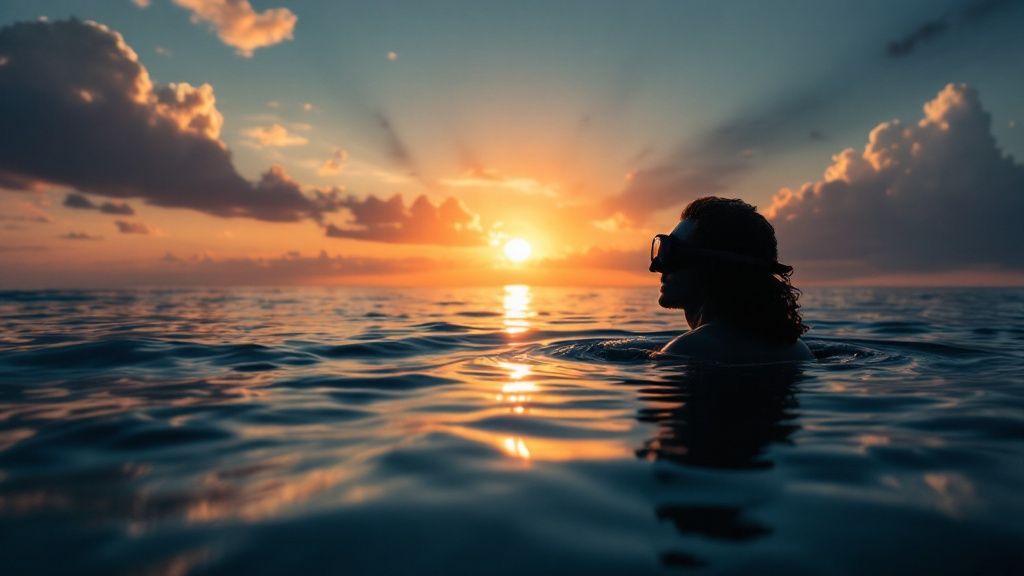
Captain Cook is a haven for snorkelers, boasting a vibrant underwater ecosystem. However, this special place faces increasing environmental pressures. Balancing tourism with conservation is key to its future. This means actively protecting the reef and its inhabitants while still allowing visitors to witness its beauty. How can we ensure Captain Cook snorkeling remains viable for generations to come?
Conservation Initiatives: Protecting the Reef
Numerous initiatives are working to protect the delicate coral reefs and diverse marine life of Kealakekua Bay. Coral restoration projects are actively rebuilding damaged areas of the reef. These projects often involve transplanting healthy coral fragments onto damaged sections, encouraging regrowth and ecosystem recovery.
Local communities also play a vital role. Community-led management efforts have demonstrably improved reef health. These efforts focus on implementing sustainable practices and educating visitors about responsible snorkeling, crucial for the bay's long-term well-being.
Sustainable Tourism: Leading the Charge
Many tour operators are embracing sustainable tourism practices. They recognize their role in preserving the bay and are taking steps to minimize their environmental impact.
- Using reef-safe sunscreen
- Educating guests about responsible snorkeling
- Supporting local conservation initiatives
Some operators even participate in reef cleanups and donate to conservation organizations. This signifies a positive shift toward responsible tourism, where environmental protection becomes integral to the business model.
Simple Practices: Making a Difference
Individual actions can significantly impact Kealakekua Bay's protection. Following simple guidelines makes a real difference:
- Don't touch the coral: Even a seemingly harmless touch can damage delicate coral polyps.
- Use reef-safe sunscreen: Conventional sunscreens can contain chemicals harmful to coral.
- Respect marine life: Observe from a distance and avoid disturbing the natural environment.
These small steps, taken collectively, have a significant positive impact on the reef’s health.
Technology's Role: Monitoring and Protecting the Future
Technology is playing a crucial role in monitoring and protecting Kealakekua Bay. Scientists use advanced tools to track reef health, monitor water quality, and study marine life populations.
This data provides valuable insights for developing effective conservation strategies. For example, underwater drones with high-resolution cameras capture detailed images of the reef, helping scientists identify areas of concern and track restoration progress. Technology is becoming an essential tool in our preservation efforts.
Experience the wonder of Captain Cook snorkeling while contributing to its preservation. Choose a responsible tour operator and practice mindful snorkeling techniques. Together, we can ensure this unique underwater paradise thrives for years to come.
Ready for an unforgettable snorkeling adventure while supporting sustainable tourism? Book your Captain Cook snorkeling tour with Kona Snorkel Trips today! Explore our tours and discover the magic of Kealakekua Bay.
